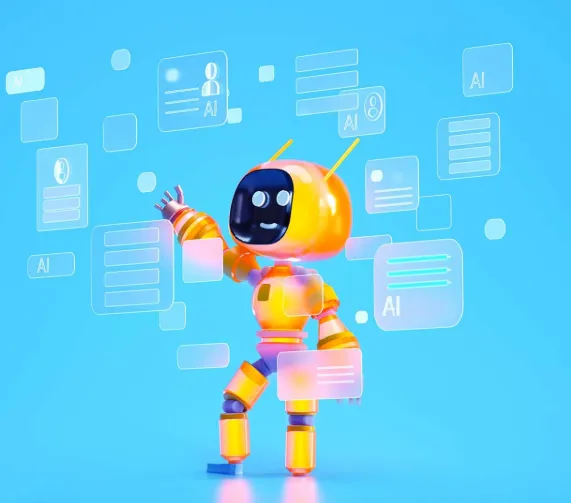In today’s fast-paced digital product development world, a new trend is gaining traction: vibe coding. This AI-powered approach promises to accelerate the prototyping process, transforming abstract ideas into tangible products in a fraction of the time. But does it really live up to the hype, or does it carry significant risks? In this article, Ritam Gandhi, Founder and Director of Studio Graphene, delves into the world of vibe coding, its advantages, its drawbacks, and how teams can make the most of it without compromising the quality of their product.
What Is Vibe Coding?
Vibe coding is a new AI-driven method for generating functional user interfaces (UIs) with minimal effort. By providing simple prompts, users can create fully interactive designs in no time. For example, you might ask an AI tool like ChatGPT or Retool AI to “Build me a sales dashboard with filters for date range and region.” In response, the AI generates a working UI complete with charts, filters, and layout containers. The result? A prototype ready for feedback, testing, or internal use—often in just a few minutes.
While some might argue that vibe coding could replace developers entirely, that’s not the full picture. Instead, it has the potential to streamline the process of moving from concept to reality, turning initial ideas into rough prototypes for testing and iteration. But, like any new technology, it comes with both remarkable benefits and notable challenges.
The Benefits: Speed and Empowerment
At Studio Graphene, we’ve experimented with vibe coding extensively over the past year. One of the most significant advantages we’ve found is how it allows teams to rapidly test new ideas. For instance, a simple query like “Can we add this functionality to our app?” can quickly result in a basic prototype. This rapid ideation allows for fast feedback, enabling teams to determine whether an idea is worth pursuing without wasting time on unnecessary development.
Vibe coding also empowers non-technical team members to participate in product development. Marketing professionals, C-suite executives, and even junior staff can now explore design options and develop prototypes without needing years of coding experience. The democratization of development in this way leads to more innovation and creativity across the team, as more people can contribute their ideas and experiment with solutions.
For developers, vibe coding removes much of the repetitive, mundane work—such as setting up basic UI elements or wiring APIs. This allows them to focus on more complex tasks, like creating scalable architectures and solving advanced technical problems. Ultimately, vibe coding enables a leaner, more efficient development process where the focus is on building better products, not just hiring more developers.
The Drawbacks: Hidden Costs and Potential Pitfalls
Despite its impressive benefits, vibe coding isn’t without its flaws. One major downside is the quality of the AI-generated code. While a prototype may look functional on the surface, it’s often fragile beneath the surface. The underlying code can be messy, difficult to read, and prone to breaking down when developers try to make changes. This isn’t necessarily a problem if vibe coding is used merely for ideation and testing, but it does raise concerns if teams try to rely on it for building robust, scalable applications.
Another issue is the potential for vibe coding to blur the lines between roles within the team. Without clear structures, different departments could start creating prototypes independently, leading to fragmented and potentially conflicting development efforts. For instance, marketing might develop a UI prototype without engaging engineers, resulting in a mismatch between design and technical feasibility.
To avoid these problems, it’s essential that product teams and engineers are involved in the process from the outset. While vibe coding allows non-technical team members to explore ideas, it works best when everyone is aligned and when engineers provide context to ensure the prototypes make sense in the larger development framework.
Integrating Vibe Coding Into Product Development
So, what does vibe coding mean for the future of product development? The key takeaway is that vibe coding isn’t about replacing developers; it’s about augmenting their workflow. AI tools can’t handle the scale, performance, security, or maintainability that skilled engineers bring to the table. But they can help break down the initial barriers to starting a project. Vibe coding removes the friction of getting started, enabling teams to quickly test and iterate ideas without tying up engineering resources.
For engineers, vibe coding is a valuable tool for speeding up the ideation process. It helps them validate UI concepts, test design patterns, and quickly build internal tools. While it may not be ready for large-scale production work, it serves as a fantastic way to get the ball rolling on new projects.
At Studio Graphene, vibe coding has become a crucial part of our workflow. We’ve learned to balance its strengths with its limitations, using it as a tool for rapid prototyping, testing, and exploration. It’s not a magic bullet that does all the work for us, but it removes the friction of starting a project, and that’s often the hardest part.
Conclusion: A Valuable Tool, But Not the End of the Road
Vibe coding is a game-changer when it comes to quickly turning ideas into working prototypes. It speeds up the ideation process, empowers non-technical team members, and frees developers from repetitive tasks. However, it’s not a one-size-fits-all solution. While it’s excellent for rapid prototyping and testing assumptions, it shouldn’t be relied upon for creating production-ready code.
In product development, vibe coding is like a conversation starter—it gets the ideas flowing and opens up new avenues for innovation. But once the idea is validated, it’s still up to the developers to bring it to life using solid engineering practices. If you’re not already experimenting with vibe coding, now is the time to start. The tools are available, the potential is real, and the future of development is moving faster than ever before.







